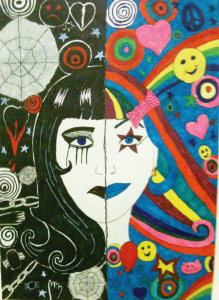 Our nation seems like it’s always in the grips of a stress epidemic. Stress and anxiety are disorders that affect more people than ever before, with research suggesting that work related stress costs the American economy $300 billion each year as a result of related health care costs and missed days at work. According to 76% of those individuals suffering from stress, money and work are the leading causes of the condition. Workplace stress can have a myriad of adverse effects. It can lead to physical and psychological systems (with one in ten strokes being attributed to stress) and, at its worse, workplace stress can even result in alcohol or substance abuse in a bid to drown out the tension of the experience.
Our nation seems like it’s always in the grips of a stress epidemic. Stress and anxiety are disorders that affect more people than ever before, with research suggesting that work related stress costs the American economy $300 billion each year as a result of related health care costs and missed days at work. According to 76% of those individuals suffering from stress, money and work are the leading causes of the condition. Workplace stress can have a myriad of adverse effects. It can lead to physical and psychological systems (with one in ten strokes being attributed to stress) and, at its worse, workplace stress can even result in alcohol or substance abuse in a bid to drown out the tension of the experience.
However art therapy can be massively beneficial in helping to deal with workplace stress and process the emotions involved. Intensively focusing on any activity (be that creating art, concentrating on a hobby, or even reading a book) can help to temporarily relieve stress by distracting and refocusing the mind at least for a while. However, dealing with stress more permanently requires more creative solutions. Here’s how art therapy can help you to effectively deal with the work stress in your life:
You Don’t Have To Verbalize How You Are Feeling
Some aspects of leading a stressful life can be difficult to talk about and process. However art therapy doesn’t always require its practitioners to verbalize the stress that they are experiencing, instead enabling them to express what they feel and release their anger and unhappiness without any need to express their emotions through words.
You don’t even have to be an artist to enjoy these benefits of art therapy; in fact, the artistic results of your endeavors are secondary to the emotional benefits that you can reap. Your insights into the cause of your stress and anxiety will increase, and you will have increased self-awareness about what is leading to your stress and, ultimately, how you can avoid these anxiety triggers.
You Can Practice Anti-Stress Art Therapy Anywhere
Art therapy encourages creativity and self-expression; sensations that are generally suppressed and not experiences in the conventional workplace. It can, however, be used to counter those negative emotions that are experienced within the workplace: Art therapy is a portable form of therapy, and one that can be practiced alone without the support of a therapist when necessary (though it’s always recommended to enlist the help of a professional art therapist whenever possible).
This means that when you are working within a corporate environment you can de-stress during your lunch break by painting or coloring: rather than spend your downtime stressing out about any negative comments made by your clients or co-workers, you can release any of those negative emotions through your artwork and express what you are feeling, in turn potentially helping you to overcome stress, anxiety, and depression.
 Learning The Techniques Involved
Learning The Techniques Involved
To be truly effective, art therapy is best practiced with the guidance and support of an art therapist practitioner, there are a host of art therapy techniques that you can try that will help you to de-stress in a relatively short time frame.
One technique to try is to write a postcard (that you never intend to send) to someone within your workplace who has caused you significant stress: the process of writing the text will be therapeutic in itself, but designing and creating the visual aspects of the postcard will also cause you to relax and deflate any anger you are experiencing. Once you have thrown the postcard in the trash bin, you will find that your stress levels decrease and the individual or individuals causing you stress lose their power.
Alternatively, if you are self-conscious about your art work (and feel you have no talent or aren’t creative) why not try drawing in the dark? You could still reap the stress-relieving benefits of art therapy, but in freedom from your inner art critic. Once you turn the lights back on you’ll be amazed at what you have created, but this creation will be secondary to the stress relief of creating art in the first place.
The beauty of both these techniques is that they can be practiced for as long or little as you wish, depending on the amount of time you have. Just ten minutes of self-directed art therapy can make improvements to the quality of your day and to the levels of stress or anxiety you experience.
Last Updated on March 26, 2016




